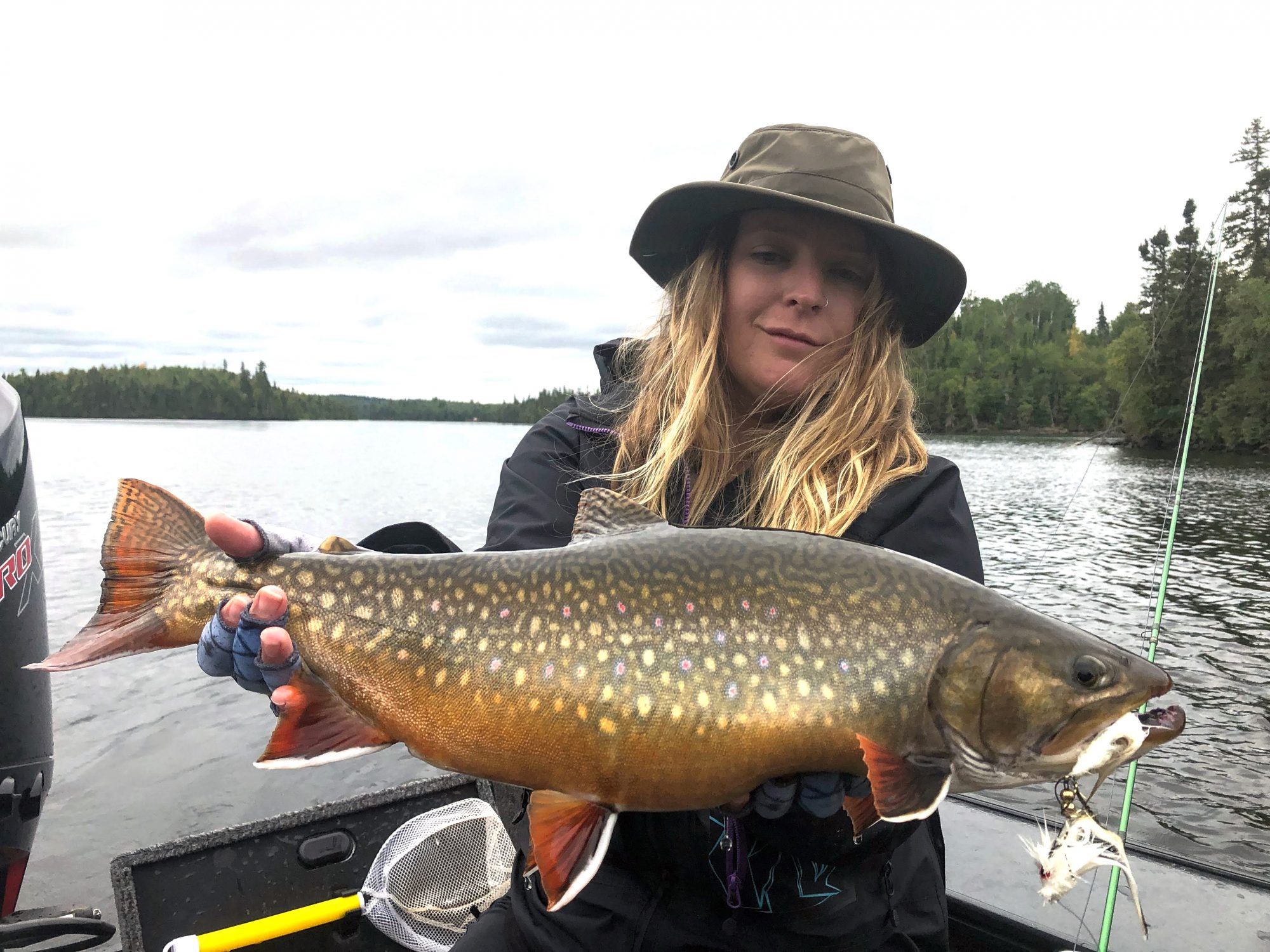
10 Brook Trout Facts
Back to Superior Country BlogBrook Trout are native to Ontario, in fact, they are the only native river trout in Ontario. No matter if you’re conventional fishing or fly-fishing for these river beauties, you’re sure to have a memorable experience. Superior Country is home to the best Brook Trout fishing experiences, local Lodges and Outfitters deliver ample opportunities to make your Brookie catching dreams come true!

1. Scientific Name
With a range of nicknames such as Brookies, Speckled Trout, Specs, Char and Coaster Trout, their scientific name is Salvelinus Fontinalis. They’re a type of Char and so belong to the salmon family.
2. Life Span
Brook Trout have a rather short life span when being compared to species they share waterways with. They have an average life span of 5-7 years in proper conditions.

3. Brook Trout Size
The size of the fish highly depends on their environment. When in cold clear waterways they size up around 18-22 inches in length. In Southern Ontario, where water temperatures are generally warmer, they average 7-9 inches and 12-14 is the generally the largest they’ll reach. However, there are a few rare reports of 18 inch Brookies in Southern Ontario.
RELATED ARTICLE: 10 Lake Trout Facts
4. Spawning
In late September into mid December Brook Trout will seek out areas with an upwelling water. “What is upwelling water?” you might ask, great question! It is a natural phenomenon in which a wind-driven motion of cooler, and usually nutrient-rich water from deeper areas cycles towards the surface. This creates ideal areas for them to dig their nests and lay their eggs, after which they’ll gently cover them with a thin layer of gravel. The eggs will then incubate over the winter, then come late winter/early spring they’ll hatch to being their journey. The larger the female, the more eggs they’ll lay: a brookie 18 inches and larger can lay 4,000 eggs while a smaller mature females will only lay around 300-400 eggs.

5. Habitat
Two words – cold and clear! That is a key requirement for a Brook Trout inhabitable environment. Their preferred water temperature lies between 10-16°C (50 to 60F). However, along with that, come spawning they need waterways that comprise current and rapids with rocky/gravelly ground structure as both these factors play a part in keeping the water clear. They don’t stay in river systems year-round, they migrate back to them only during spawning and will inhabit lakes the rest of the year.
6. Diet
Their primary food source are aquatic insects such as water beetles, flies, worms, leeches and moths. Additionally, depending on size, they’ll also consume frogs, toads and mice.

7. Brook Trout Baits and Lures
Depending on if you’re conventionally fishing or fly-fishing your lure needs will change. While conventionally fishing the common baits and lures include Swimbaits, Mepp’s Spinners, Little Cleo’s, Rooster Tails and Jigs.
When fly-fishing, the options seem to span a lot wider. Dry, wet, streamer and nymph flies are all basic ties. Specifically, Elk Hair Caddis, Muddler Minnows, and Woolly Buggars.

8. Appearance
Notable for their beautifully vibrant post spawning colors, they encompass bright red/pink bellies and tail fins. Their bodies are scattered with reddish, orange speckles that have a blue hued ring around the specs and their base color is usually an olive green or lighter brown. Brookies fins have easily identifiable white outline on the front accompanied by a thinner black strip and then the remainder of the fin is filled with the reddish/orange color. The vibrancy of colors highly depend on if they are in or out of spawning and the general water conditions to which they live in, richer and clearer waters will pose brighter colors while darker colors come from warmer darker waters.

9. Brook Trout – Salters vs Coasters
Brook Trout have two different migratory populations: The Salters and the Coasters. As the name suggests, the salters inhabit salted waters in the Northeast and will migrate to fresh water rivers to reproduce, making them a an anadromous species. The coasters inhabit the fresh water Great Lakes and reproduce in rivers that’re also fresh water, through their life cycle they don’t meet saltwater, which makes them potamodromous.
10. World Record Brook Trout
The world record Brook Trout was caught here in Superior Country! The record was set and has been held up since 1915. Dr. Cook caught the Brookie in the Nipigon River and it weighed in at 14.5 pounds and 31.5 inches long! Wow. It is no wonder why Superior Country is a highly sought out destination for anglers targeting Brook Trout.

Want to learn more about Ontario’s Superior Country fish species? Check out these 10 Walleye Facts! or, if you’re interested in learning more about the Brook Trout follow through to: Brook Trout – An in depth look at the species.

 Walleye
Walleye Northern Pike
Northern Pike Lake Trout
Lake Trout Brook Trout
Brook Trout Steelhead
Steelhead Salmon
Salmon Smallmouth Bass
Smallmouth Bass Perch
Perch Superior Picnics
Superior Picnics
